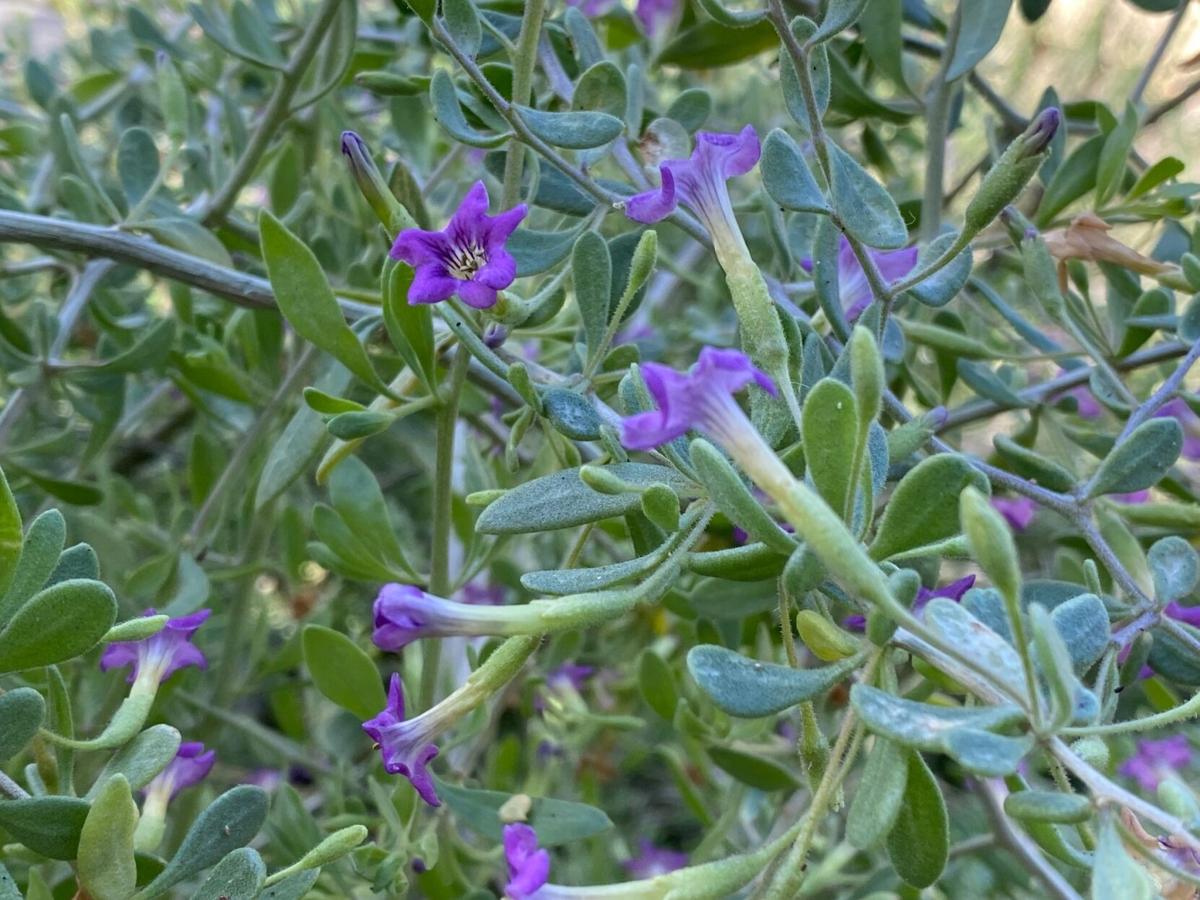Wolfberries (Lycium spp.) are a wonderful native plant. They are extremely tolerant of our soils and sun, and provide food and habitat for birds, small mammals, lizards and insects. They also provide food for people.
The berries are related to the famous Goji berry, and also contain lots of antioxidants. This time of year, you will notice their delicate purplish or white (depending on species) flowers. The berries form in mid-spring. Berries are usually some variation of red.
The fruit is usually fairly tart, but can be dried to improve the flavor when eaten raw. Most people use the berries to make sauces and preserves. If you have chickens, they will also greatly enjoy eating the berries. Desert Harvesters has some very helpful information and recipes for the berries on its website and in their cookbook Eat Mesquite and More.
One of the reasons that birds love these bushes is because they’re very thorny and sprawling, which limits the places in your landscape where you can use them. They're great for property boundaries, but not great for areas where people may be walking. As mentioned, they tolerate our alkaline soils, and prefer a bit of light shade, but not too much, as they can get leggy. In the wild they frequently grow under or near mesquites and palo verde. However, they will do fine in full sun, as well.
Besides their thorniness and sprawl, keep in mind that they may go dormant and lose their leaves in the dry heat of our pre-monsoon summer. They may also lose leaves in the winter if it gets particularly cold. Thus, there will be a period of time when they don’t look particularly attractive. This is another good reason to place them in the periphery of your yard.
These plants don’t respond well to pruning, and in any case their numerous thorns would make the job onerous. They are best for naturalistic landscapes, where you are blending the garden boundary into the desert, or, as mentioned, as shrubs to plant along the boundary of your garden. They also will look good if planted among native desert habitat.
According to a study, certain foods grow better in urban areas than in rural areas.





